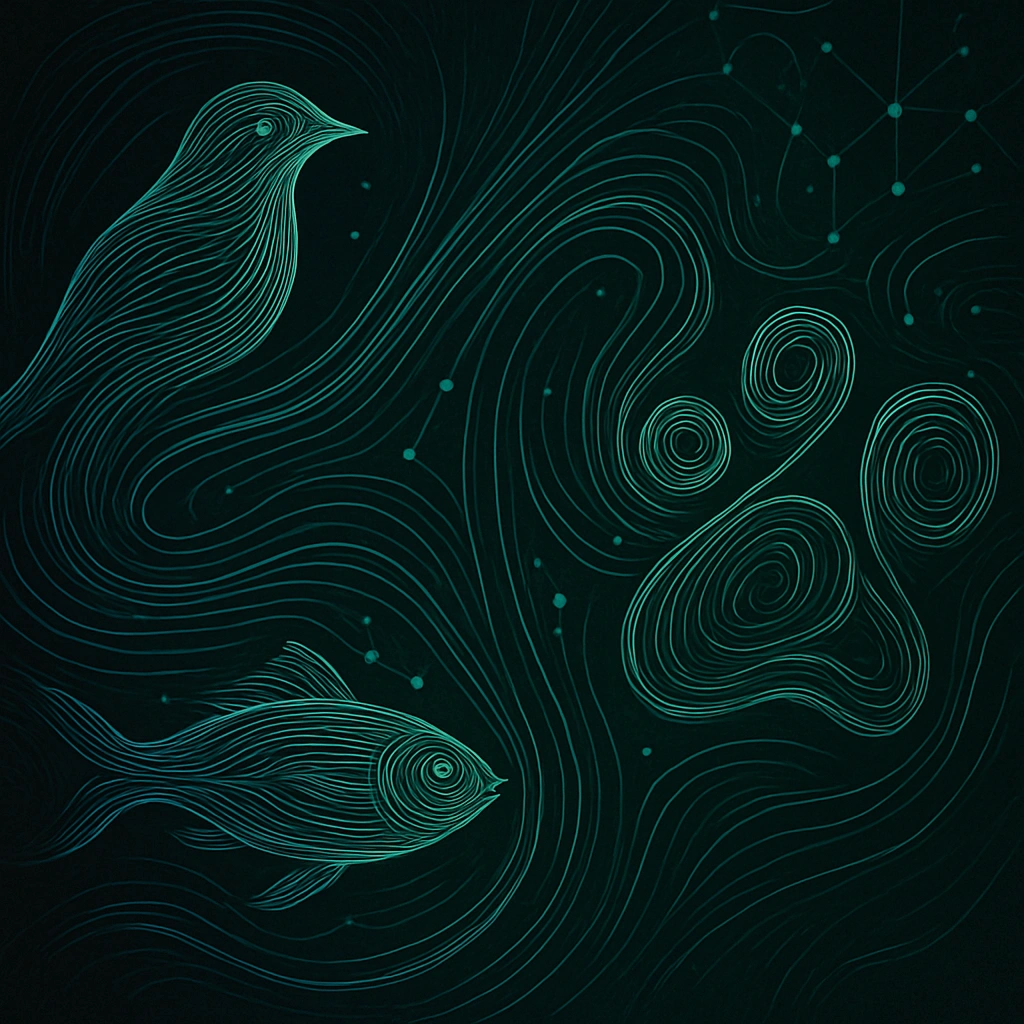
Generative Models & Behaviour Simulation
While most AI systems classify or predict, generative models create. In recent years, techniques such as generative adversarial networks (GANs) and variational autoencoders have been applied to animal ecology, synthesising realistic images, movements and even vocalisations of creatures rarely observed in the wild. By learning the underlying distribution of training data, these models can simulate flocks of birds wheeling through the sky, schools of fish reacting to predators or herds migrating across a landscape. Synthetic datasets help researchers explore how environmental changes might alter behaviour and provide training material for recognition systems when real observations are scarce.
These creative tools are grounded in statistics. Generative models estimate probability densities and sample from them to produce new examples, while traditional methods like classification, regression and clustering organise the input data. Behavioural recordings are often high‑dimensional and noisy; clustering isolates distinct states such as foraging, social interaction or escape, and regression links movement parameters to environmental variables. In multi‑agent simulations, reinforcement learning teaches artificial animals to adapt their strategies, producing emergent group behaviours. Combining these approaches allows scientists to build virtual populations that respond realistically to external stimuli.
Applications stretch beyond basic research. Synthetic animal trajectories support the design of collision‑avoidance systems for ships and aircraft by modelling where whales or birds might be at a given time. Virtual herds help conservation planners test how roads and fences could disrupt migration routes before construction begins. In robotics, engineers use generative models to teach quadrupeds and drones animal‑inspired gaits and adaptive navigation. Museums and games leverage lifelike animations to educate the public about endangered species without stressing real animals. By augmenting limited field data, generative simulations open new avenues for exploration and education.
Despite their promise, generative models must be applied carefully. Poorly trained networks may produce implausible behaviours that mislead decision‑makers, and there is a risk that synthetic footage could be used to fabricate sightings or exaggerate threats. Ethically, creating and manipulating lifelike representations of animals raises questions about consent and respect for non‑human life. To ensure credibility, scientists should clearly distinguish between real and simulated data, validate models against observed behaviour and collaborate with ecologists and ethicists. Responsible use can turn generative AI into a powerful ally for understanding and protecting wildlife.
Back to articles